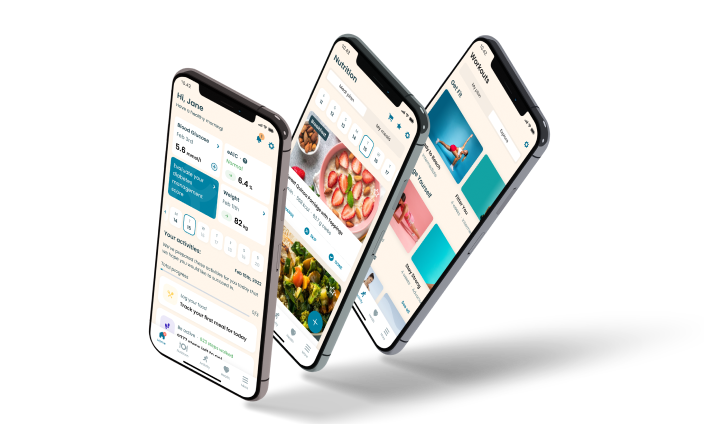Exploring the Relationship Between Apples and Diabetes
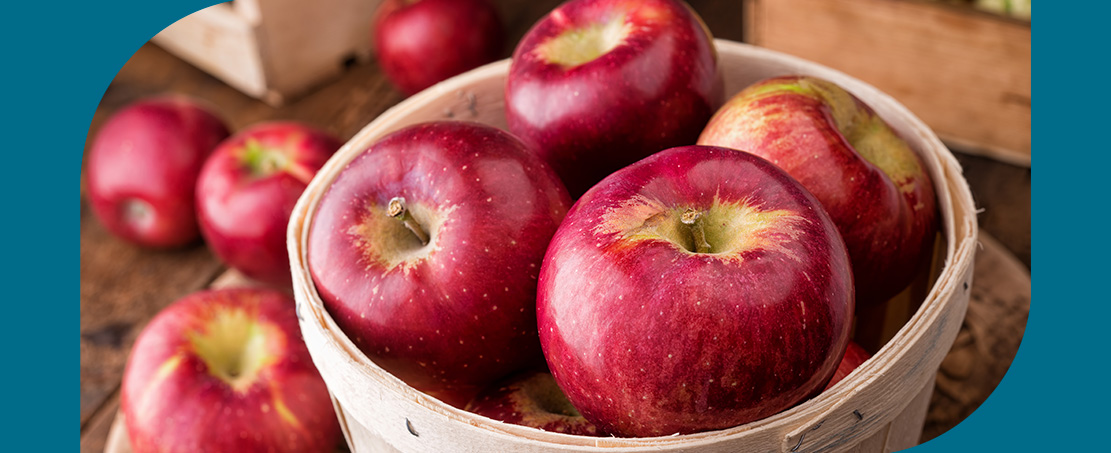
Yes
36
58 kcal
Apples rank among the top most popular and most produced fruits worldwide. That's not only because they’re pretty delicious but also due to the fantastic health benefits they offer to people of all ages and sizes. There exist 7,500 varieties of apples across the globe, of which 2,500 stem from the US.
As a diabetic who has to watch precisely what goes into your diet, you might wonder if apples are a great fit. Do apples pose a risk to diabetics? More importantly, how much of it is fit for a diabetes-friendly diet?
It turns out that apples positively affect a diabetic's health. Although, doubts arise when you discover apples contain quite some carbohydrates, which diabetics are often warned to be wary of. However, a portion of this carbohydrate is fiber, known as "the good carb." That said, apples make for a great snack and play an essential role in battling diabetes.
This guide examines what makes apples a superfood for diabetics. You’ll discover its components and how it impacts your health. It also educates you on properly fitting apples into your diet, ensuring you get just the right amount.
What to Expect
-
Dietary Information About Apple
-
How Apples Help Tackle Diabetes
-
Is Apple Juice Just as Effective?
-
Avoiding Blood Sugar Spikes With Apples: Risks to Look Out For
-
Tips for Consuming Apples as a Diabetic
Nutritional value
- Protein 0.15 g
- Carbohydrate 15.4 g
- Fat 0.16 g
- Fiber 2.1 g
- Sugar 13.3 g
- Cholesterol 0 g
A review of apples and how they affect human health shows how taking apples can reduce the risk of cardiovascular diseases like heart disease, which often occur in diabetic patients. One can’t overemphasize how vital certain nutrients are to preventing diabetes or reducing its effects. Fresh fruits like apples contain components like fiber, which are essential when dealing with insulin resistance or regulating blood glucose levels.
Apples are natural sources of fiber (soluble and insoluble), phytochemicals, vitamin C, carbohydrates, etc. The amount of each of these components tends to vary based on the size of the apple. Let’s take a closer look at the components that make up one medium size apple:
-
Calories: 95 cal
-
Fat: 0 g
-
Protein: 1 g
-
Vitamin C: 8 mg
-
Carbohydrate: 25 g
-
Sugar: 19 g
-
Fiber: 3–4 grams
-
Water: 85%
Apples are also rich in other naturally occurring chemicals like quercetin and pectin. A large portion of an apple's nutrients is contained in the skin. To get the full benefit, you’re advised to consume the apple with the skin.
Take a quiz
Discover what Klinio app can do for you
Healthy diabetes meal plan crafted just for YOU

Personalized workouts with no equipment needed

Track your progress with smart tracking tools
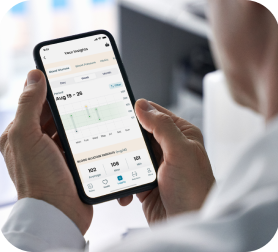
A diet fully optimized with vegetables and fruits is essential for the overall health of anyone. Even more important for diabetics are these plant-based foods.
Fruits like apples can lower the risk of developing type 2 diabetes, as some studies have shown. Here, we outline how apples help in the fight against diabetes.
Apples Minimize Insulin Resistance
Apples help reduce insulin resistance in people with diabetes. This effect is often attributed to its polyphenol content — a micronutrient found in apple skins with a functional role in stimulating the pancreas. Polyphenols improve insulin sensitivity enabling it to perform its core function.
Consequently, there’s a reduction in the blood's glucose level as the glucose is transported into the cells where they’re needed.
Apple's Glycemic Index
The glycemic index (GI) indicates how much a particular food affects blood sugar levels. Ranked on a scale of 0–100, it provides information about how much a food will spike your blood sugar. Foods with high GI scores have the body absorb sugar content from them quite easily, increasing the blood's glucose level.
However, fruits generally tend to have low GI scores. So, judging from its GI, you can see how apples affect your blood sugar level.
For example, apples score a GI of around 36, while a medium orange has a score of 43. These scores indicate that apples and oranges are fruits with low GI scores, as they’re both under 55. However, fruits like pineapples and watermelon have their GI scores on the high end of the scale.
Apple's low GI score indicates it has a low impact on blood sugar and insulin. This makes apples safe for people with diabetes and easily fit into their diet.
Apples and Blood Sugar
A consensus among most people is that “since apples are sweet, they must contain sugar.” Well, of course, apples do contain sugar. However, the sugar contained in apples presents as fructose.
This sugar form is incredibly different from the refined and processed sugars found in packaged foods. More importantly, this naturally occurring sugar found in various whole fruits has been observed to have little effect on blood sugar levels.
Taken in the right portion, the sugar found in apples won’t lead to blood sugar spikes. Also, according to a 2017 review, an effective way of keeping blood sugar levels stable is substituting glucose or sucrose with fructose.
Fiber Content
Apples are also rich in fiber — a type of carbohydrate the body can’t digest, existing primarily in plant-based foods. Fiber offers lots of benefits, especially to people with diabetes. For example, it’s been regarded as “the body's natural scrubbing brush,” keeping your bowels moving and clean.
One of its qualities is its ability to slow down digestion, keeping you full for a bit while slowing down the absorption of sugar into the bloodstream. This, in turn, helps lower blood sugar levels.
Dietary fiber also helps with weight management because it’s filling when consumed. Additionally, it takes longer to chew, giving your body enough time to figure out when it's full.
Fruits are generally rich sources of fiber, with fruits like pears, bananas, and apples taking the top spot. However, it’s important to examine their sugar content before consuming them, especially as a diabetic.
The recommended fiber intake for an adult female and male is 25 grams and 38 grams, respectively. Eating apples regularly is an excellent means of upping your fiber intake. Namely, you get about 3–4 grams of fiber in one medium-sized apple, making apples a great addition to your diabetes diet. Other fruits rich in dietary fiber include mangoes, bananas, strawberries, etc.
Apple and Antioxidants
Free radicals exist in the body due to internal metabolic processes and can also stem from external sources like air pollutants, smoking, x-rays, etc. These free radicals react with other molecules in the body in a process known as oxidation. Oxidation can lead to significant cell damage if not properly managed, hence the need for antioxidants.
Apples are rich sources of antioxidants. They pack a class of phytochemicals known as flavonoids, found primarily in fruits and vegetables. Phytochemicals perform a core function of protecting the body against oxidation.
Quercetin, a type of flavonoid found in apples, helps with this function, protecting the body against diabetic complications that result from oxidative stress. Varieties of apples like Granny Smith and Gala contain antioxidants in higher quantities than others.
It isn’t out of place to crave something other than whole fruits sometimes. Fruit juice might seem like an appealing option in these moments.
Although some fruit juices made with 100% natural fruit abound, this is usually not the case with most fruit juices. This begs the question, “can diabetics derive the same benefits from apple juice as the whole fruit?”
People with diabetes need to be wary of fruit juices, as they tend to be sugar concentrated. Apple skins are also eliminated in the process of making the juice.
As mentioned earlier, much of apples' nutrients reside in the skin. So, eliminating them makes the juices all sugar and no fiber, posing a health risk to diabetics. Avoid fruit juices and take fresh fruit instead to prevent blood sugar spikes.
Although apples remain excellent fruits that offer significant health benefits, especially to diabetics, here are some factors to look out for when consuming them.
Quantity
A famous saying is that "too much of anything is bad." Apples are healthy fruits, but taking them in excess can easily lead to weight gain or increased blood sugar levels. On the other hand, a medium size apple is enough to supply your body with the nutrients it requires.
Pesticides
Apple plants are constantly sprayed with pesticides as they’re prone to bugs and diseases. This gives them a top spot in the list of fruits high in pesticide residue. Although producers wash apples before selling them, you should also ensure you do the same before consumption.
Acid Content
Apples contain quite an amount of acid, which can play a role in tooth damage. Eating apples for a prolonged period or overeating leaves too much of this acid on your teeth. Therefore, you shouldn’t snack on apples multiple times in a day, and if you’re going to eat them, do so quickly.
Seeds
You’ve probably heard how dangerous eating an apple's seed—or its core—can be. This is true in the light that apple seeds contain chemicals.
These chemicals can turn into cyanide — a potent poison to the body system. However, there exists a limited quantity of these chemicals in each seed, meaning you’d have to eat quite a lot (150 or more) for it to be harmful.
We’ve established how apples contribute positively to the overall health of people living with diabetes. It’s crucial you slot apples in your meal plans to get all the significant benefits this delicious fruit offers. Here are some tips to help you get the best out of your apple intake:
Eat them raw
You reap the full benefits apples offer when you eat them whole, skin inclusive. In addition, the skin contains a healthy amount of fiber and other essential antioxidants that play influential roles in blood sugar management.
Try salads
Combining apples with other fruits to make delicious salads is an effective way to upgrade your diabetic diet. You can mix them with bananas, strawberries, etc.
Say NO to fruit juice
As a diabetic, you should avoid consuming foods and drinks that trigger blood sugar spikes. One of such is fruit juices, as these juices tend to lack helpful nutrients like fiber and contain more processed sugar. Summarily, eat fruits in place of fruit juices.
Eat in moderation
There’s wisdom in doing everything in moderation. As helpful as apples are in a diabetic's diet, taking too much of them can be detrimental to your health.
One medium apple a day is just about okay; any more can lead to a blood sugar spike, depending on your diabetes stage. Finally, ensure you spread out fruits across your meal plan to better manage your blood sugar level.
Apples are essential fruits in anyone's diet, including people with diabetes. Studies have proven this fruit to be effective in battling diabetes, especially in those with type 2 diabetes. You can enjoy apples without worrying about your blood sugar levels rising. However, ensure you do this in moderation, as taking too much might not be ideal for a diabetic.
Experts advise consumers to consume this fruit in its natural form. This is especially important for diabetics as processed fruits found in fruit juices can damage their health. Enjoy apples in a salad or with a mix of proteins like peanut butter. Also, watch out for pesticide residues when eating apples, and ensure you wash them well before consumption.
If you’re wondering how you can include apples in your meal plans just the right way, then a digital diabetes meal planner may be your best bet. For example, our expert-recommended app, Klinio, allows you to adequately monitor your diet and its impact on your blood sugar levels. You also get access to diet plans that are just right for diabetics.

Download Klinio app!
Get more by downloading our free Klinio App. Analyze your health, form new habits and manage your diabetes anytime, anywhere.
OR
SCAN QR CODE

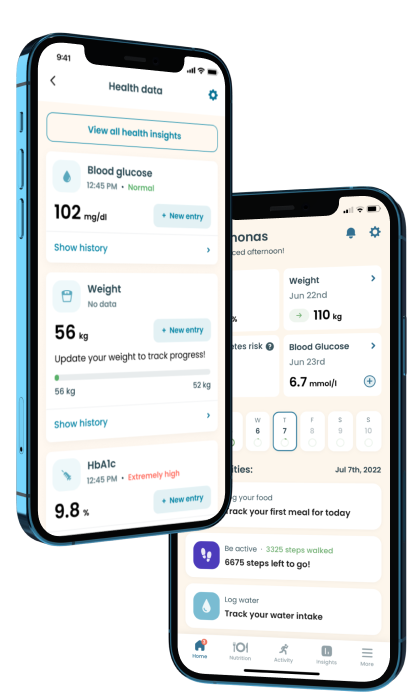
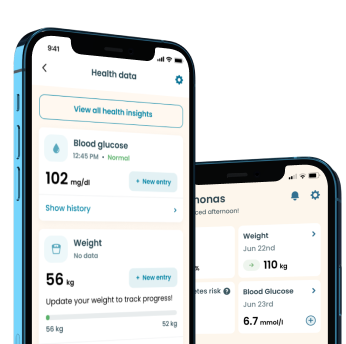
GET THE APP
